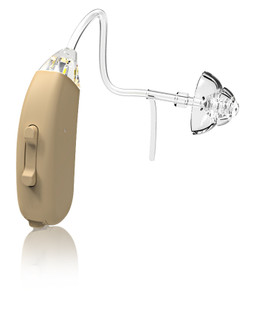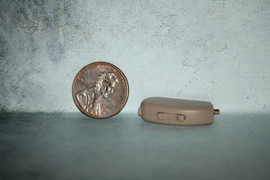Cost Implications: Are Rechargeable Hearing Aids Worth the Investment?
Posted by DR Paul on Oct 16, 2024
If you or a loved one are considering investing in hearing aids, you might find yourself at a crossroads between choosing traditional battery-operated devices and their rechargeable counterparts. The evolution of hearing aid technology has provided users with more options than ever before, each offering its own set of benefits and challenges. One key consideration is the cost implications over time. How do rechargeable hearing aids stack up against traditional ones when it comes to long-term expenses? In this blog post, we will delve into the financial aspects of both types, exploring factors such as replacement batteries, maintenance costs, and potential savings to help you make an informed decision.
Traditional hearing aids:
Traditional hearing aids have long been the standard choice for those needing assistance with their auditory capabilities. These devices typically rely on disposable zinc-air batteries that need regular replacement every few days or weeks, depending on usage. The ongoing cost of purchasing these batteries can quickly add up over time. For example, if a user requires new batteries weekly at an average cost of $1 per battery pack and uses two packs per month, they could spend upwards of $100 annually solely on maintaining power for their device. This figure does not account for potential increases in battery prices or any disruptions in supply chains that could further impact costs.
Rechargeable hearing aids:
Rechargeable hearing aids offer an alternative solution by eliminating the need for constant battery replacements. Instead, they come equipped with built-in lithium-ion batteries that can be recharged daily using a docking station or charging case—much like smartphones or other portable electronics. The upfront cost of purchasing rechargeable models tends to be higher due to the advanced technology involved; however, these devices often pay for themselves over time by reducing ongoing expenses associated with disposable batteries. Users no longer need to budget for frequent battery purchases but instead focus on ensuring their charger is readily available and operational.
Rechargeable hearing aids present additional financial advantages:
Beyond merely cutting down on recurring battery costs, rechargeable hearing aids present additional financial advantages through reduced maintenance fees and improved durability. Traditional hearing aid users sometimes face unexpected repair costs due to moisture damage from handling small batteries frequently—a problem significantly minimized with rechargeable models as they require less manual intervention from users during charging cycles. Furthermore, many manufacturers offer warranties specifically designed around their rechargeable products' longevity and performance guarantees; such assurances provide peace-of-mind knowing that repairs may be covered under warranty should issues arise within specified periods after purchase.
Rechargable hearing aids and environmental sustainability:
Another significant aspect worth considering when weighing cost implications is environmental sustainability—a factor increasingly important among consumers today who wish not only economic efficiency but also ecological responsibility reflected in buying decisions made consciously toward greener alternatives whenever possible—in this case opting out single-use disposables thereby contributing positively towards reducing overall waste generated globally while still enjoying same level quality sound enhancement expected from latest auditory assistive technologies available marketwide now!
Rechargable hearing aids lower long run cost:
While initial investments into acquiring high-quality rechargeables might seem daunting compared against lower-priced traditional hearing aids. The no longer the need to buy batteries will make up for this additional cost.
In conclusion, choosing between traditional and rechargeable hearing aids involves careful consideration of both immediate expenses and long-term financial implications. While traditional models may appear more economical at first glance due primarily lower initial costs upfront buyers must also take into account hidden expenditures related continual upkeep required maintain functionality desired levels performance expected deliver.










